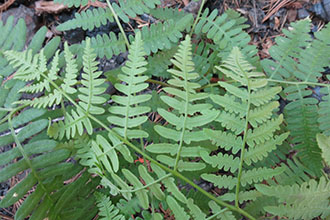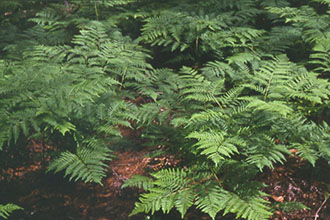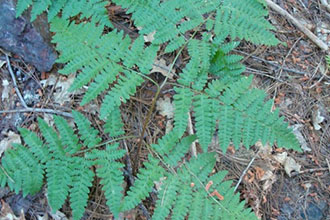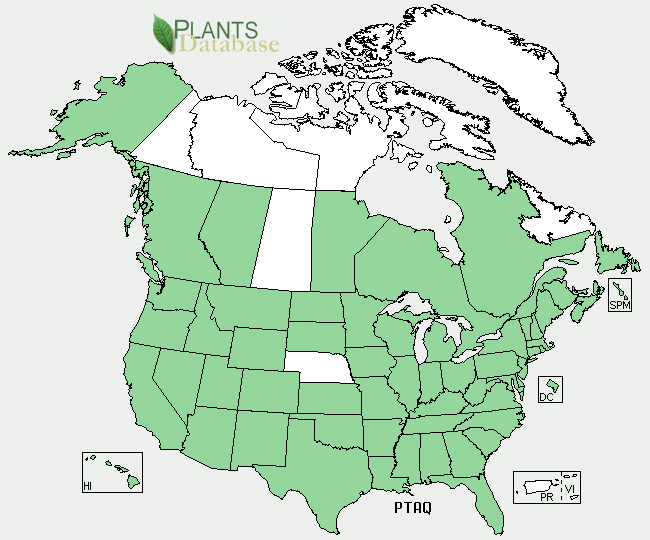Taxonomy: Kingdom - Plantae (plants). Subkingdom - Tracheobionta (vascular plants). Division - Pteridophyta (ferns)
Class - Filicopsida. Order - Polypodiales. Family - Dennstaedtiaceae (bracken fern) Genus - Pteridium Gleditsch ex Scop. (brackenfern). Species Pteridium aquilinum (L.) Kuhn (western brackenfern).
Ecology: The leaves or fronds of western bracken fern are normally from 3-30 dm long including a stipe (leaf-stalk) that may be as long as 10-15 dm but is usually shorter than the leaf blade. The blades of the fronds are divided into pinnae, the bottom pair of which are sometimes large enough to give the impression of a three-part leaf. Rhizomes are the main carbohydrate storage organs. Rhizomes also store water and are consistently around 87 percent water. Rhizomes can be up to 2.5 cm in diameter and branching is alternate.
Western bracken fern is basically a shade-intolerant pioneer and seral species that is sufficiently shade tolerant to survive in light-spots in old-growth forests. The light, windborne spores of western bracken fern allow it to colonize newly vacant areas. Western bracken fern has been documented as a pioneer on sterile, cooled lava slopes. Western bracken fern increases soil fertility by bringing larger amounts of phosphate, nitrogen, and potassium into circulation through litter leaching and stem flow; its rhizomes also mobilize mineral phosphate.
Western bracken fern is most commonly used today as a food for humans. The newly emerging croziers or fiddleheads are picked in spring and may be consumed fresh or preserved by salting, pickling, or sun drying. Both fronds and rhizomes have been used in brewing beer, and rhizome starch has been used as a substitute for arrowroot. Bread can be made out of dried and powered rhizomes alone or with other flour. American Indians cooked the rhizomes, then peeled and ate them or pounded the starchy fiber into flour. In Japan starch from the rhizomes is used to make confections. Bracken fern is grown commercially for use as a food and herbal remedy in Canada, the United States, Siberia, China, Japan, and Brazil and is often listed as an edible wild plant. Powdered rhizome has been considered particularly effective against parasitic worms. American Indians ate raw rhizomes as a remedy for bronchitis.



